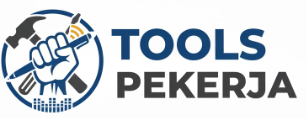How Subscription Meal Kits Are Revolutionizing Home Cooking and Online Shopping has emerged as a game-changer in the culinary landscape, simplifying meal preparation while enhancing the convenience of online shopping. These meal kits offer a delightful way for home cooks to explore diverse cuisines without the hassle of grocery shopping, all while delivering fresh ingredients right to their doorsteps. As our lives become busier and our tastes more adventurous, these services have transformed how we think about cooking at home.
By combining the best of culinary creativity with the efficiency of e-commerce, subscription meal kits cater to a wide range of dietary preferences and lifestyles. They not only make it easier to whip up nutritious meals but also encourage individuals to experiment in the kitchen, trying new recipes and ingredients that they might not otherwise consider. This trend reflects a broader shift towards convenience in our daily lives, and it’s reshaping the relationship we have with food.
In Kits the modern world, where technology seems to advance at an exponential rate, the significance of effective communication cannot be overstated. Whether in personal relationships, academia, or the corporate sphere, the ability to articulate thoughts clearly and succinctly is a crucial skill that can determine success or failure. This article explores the various aspects of communication, its importance, the different forms it can take, and tips for improving this essential skill.### Understanding CommunicationAt its core, communication is the process by which information is exchanged between individuals.
It can be verbal, non-verbal, written, or visual. Each form has its unique characteristics, and understanding these can enhance the effectiveness of how we convey and receive messages.
1. Verbal Communication
This Kits includes spoken language and is often the most direct form of communication. It can occur face-to-face, over the phone, or through video calls. The tone of voice, pitch, and volume play significant roles in how messages are interpreted. Moreover, verbal communication allows for immediate feedback, which can be crucial in conversations.
2. Non-Verbal Communication
Often Kits referred to as body language, this form of communication encompasses facial expressions, gestures, posture, and eye contact. Non-verbal cues can sometimes convey more than words themselves. For instance, a warm smile can express friendliness, while crossed arms may indicate defensiveness or disagreement.
3. Written Communication
This includes emails, letters, reports, and social media posts. Written Kits communication is vital in professional settings where documentation is necessary. Clarity and grammar are paramount in this form, as the absence of tone and body language can lead to misunderstandings.
4. Visual Communication
This Kits involves the use of visuals to convey information. It includes infographics, charts, images, and videos. In an age dominated by digital media, visual communication has become increasingly important, as it can capture attention and convey complex information succinctly.### The Importance of Effective CommunicationEffective communication is essential for numerous reasons:
Builds Relationships
Good Kits communication fosters trust and understanding in relationships, whether personal or professional. It creates a sense of connection and helps in resolving conflicts efficiently.
Enhances Collaboration
In Kits a work environment, clear communication encourages teamwork. When team members are on the same page, they can collaborate effectively, leading to increased productivity and innovation.
Facilitates Learning
In educational settings, effective communication between teachers and students promotes a better learning experience. It allows for the clarification of concepts and encourages student participation.
Improves Problem-Solving
Effective communicators can articulate problems clearly, which is the first step towards finding solutions. This skill is invaluable in crisis situations where swift decision-making is necessary.
Promotes Engagement
Whether in a classroom or a workplace, engaging communication keeps people interested and involved. It enhances the overall experience and encourages active participation.### Barriers to CommunicationDespite its importance, several barriers can impede effective communication:
1. Cultural Differences
Diversity in cultural backgrounds can lead to misunderstandings. Different cultures have varying communication styles, and what is considered polite in one culture may be perceived differently in another.
2. Emotional Barriers
Personal feelings and emotions can cloud judgment and affect how messages are conveyed or received. For example, if someone is angry or upset, they may not communicate effectively.
3. Language Barriers
In a globalized world, language differences can pose significant challenges. Misinterpretations can arise when individuals do not share a common language or when jargon is used without consideration of the audience.
4. Physical Barriers
Inconsistent environments, such as noisy locations or technological issues, can hinder effective communication. For instance, a poor internet connection can disrupt a video call.
5. Perceptual Barriers
Individual perceptions and biases can alter how messages are interpreted. Personal experiences and preconceived notions can distort understanding.### Tips for Improving Communication SkillsImproving communication skills is an ongoing process that can significantly benefit both personal and professional interactions. Here are some practical tips:
1. Be an Active Listener
Listening is just as important as speaking. Active listening involves fully concentrating on what the other person is saying and responding thoughtfully. This practice not only demonstrates respect but also fosters a more meaningful exchange.

2. Practice Clarity and Conciseness
Aim to be clear and concise in your messaging. Avoid using jargon or overly complex language that may confuse the listener. Instead, opt for straightforward language that gets your point across effectively.
3. Develop Empathy
Understanding the perspective of others can enhance communication. Empathy allows for better responses and helps in addressing the emotional undertones of conversations.
4. Adjust Your Body Language
Be mindful of non-verbal cues. Ensure that your body language aligns with your verbal message. Maintain eye contact, use appropriate gestures, and be aware of your posture.
5. Seek Feedback
Encourage feedback from peers, colleagues, or mentors about your communication style. Constructive criticism can provide valuable insights and help you identify areas for improvement.
6. Engage in Public Speaking
Practicing public speaking can boost confidence and improve verbal communication skills. Join organizations such as Toastmasters, where you can practice speaking in front of an audience.
7. Utilize Technology
In today’s digital age, leveraging technology can enhance communication. Use tools like video conferencing, instant messaging, and collaborative platforms to streamline information sharing.
8. Read and Write Regularly
Engaging with various forms of written content can enhance vocabulary and writing skills. Additionally, practicing writing can help in organizing thoughts and presenting information coherently.
9. Be Mindful of Tone and Emotion
Especially in written communication, the tone can easily be misinterpreted. Take time to consider how your message may come across and adjust it to suit the context.1
0. Stay Open-Minded
Being Kits open to new ideas and perspectives fosters a more collaborative environment. Accepting that others may have different viewpoints can lead to richer discussions and better understanding.### ConclusionEffective communication is a vital skill that transcends all areas of life. Whether in personal relationships, academic pursuits, or the corporate world, the ability to convey thoughts and feelings clearly is essential for success.
By Kits understanding the various forms of communication, recognizing barriers, and employing strategies to enhance our skills, we can improve our interactions and build stronger connections with those around us. As we continue to evolve in this fast-paced world, mastering communication will remain a cornerstone of personal and professional growth.






